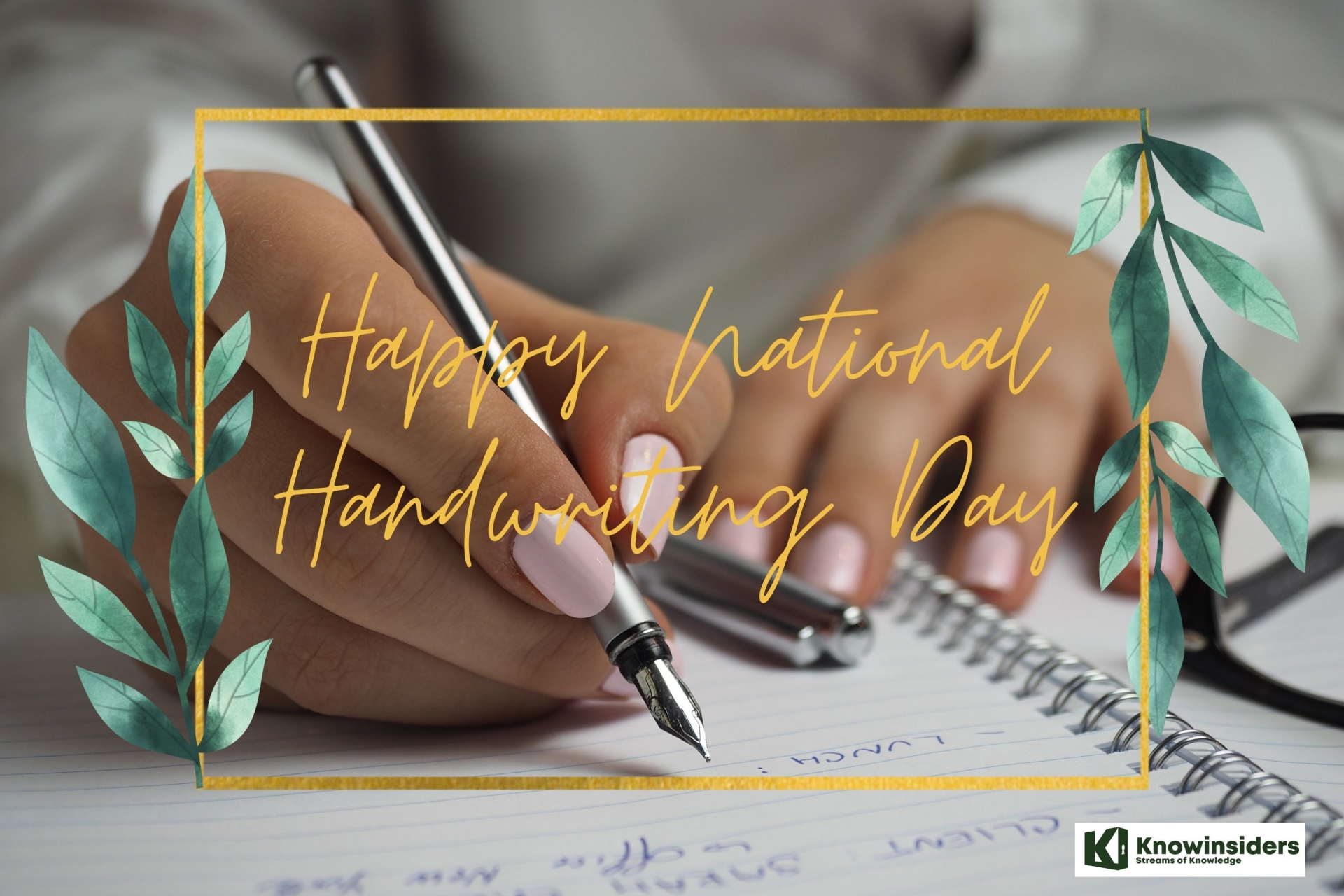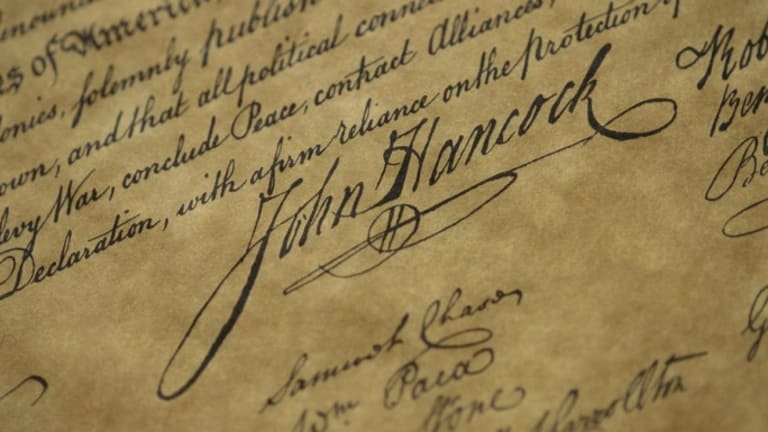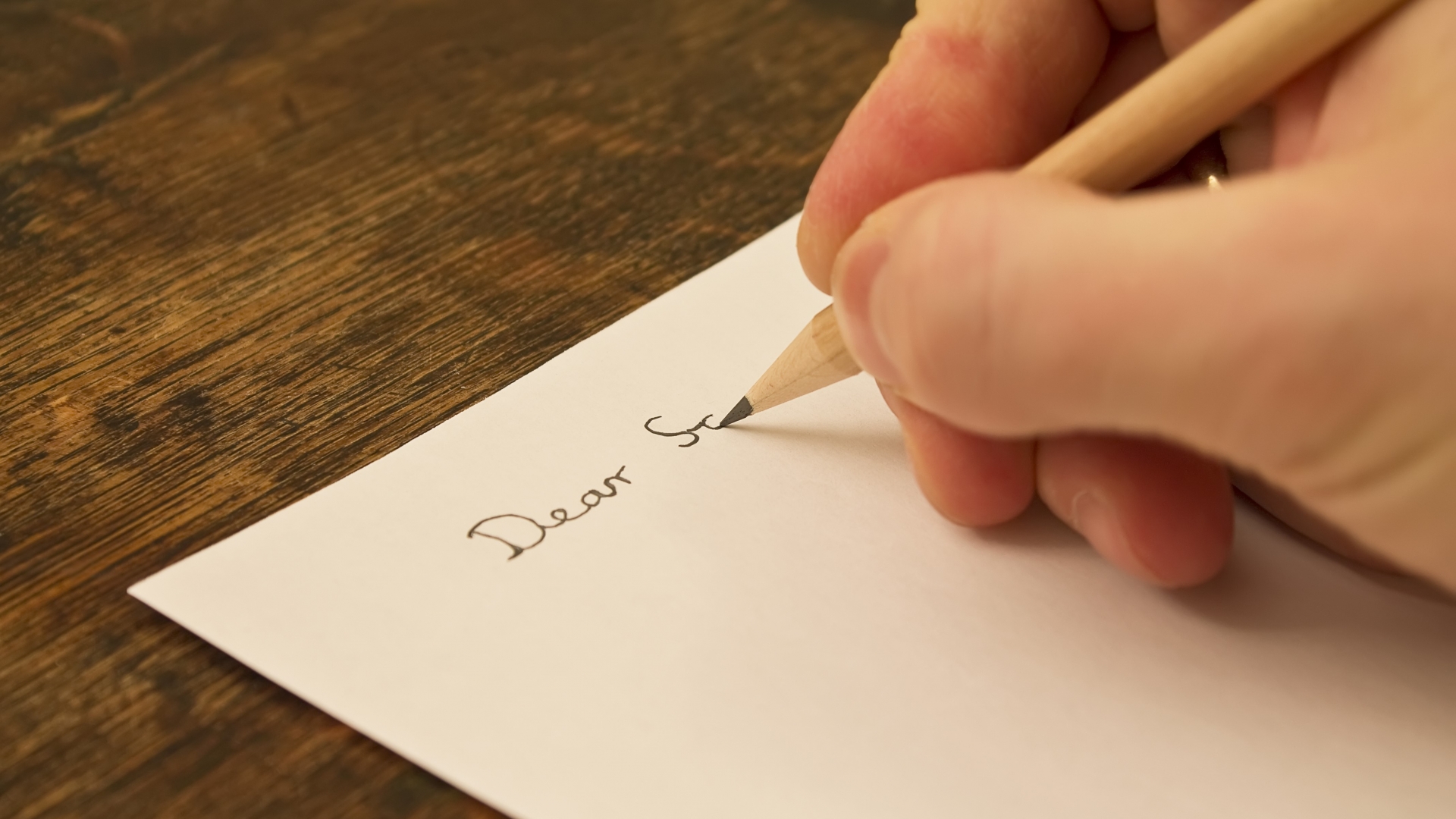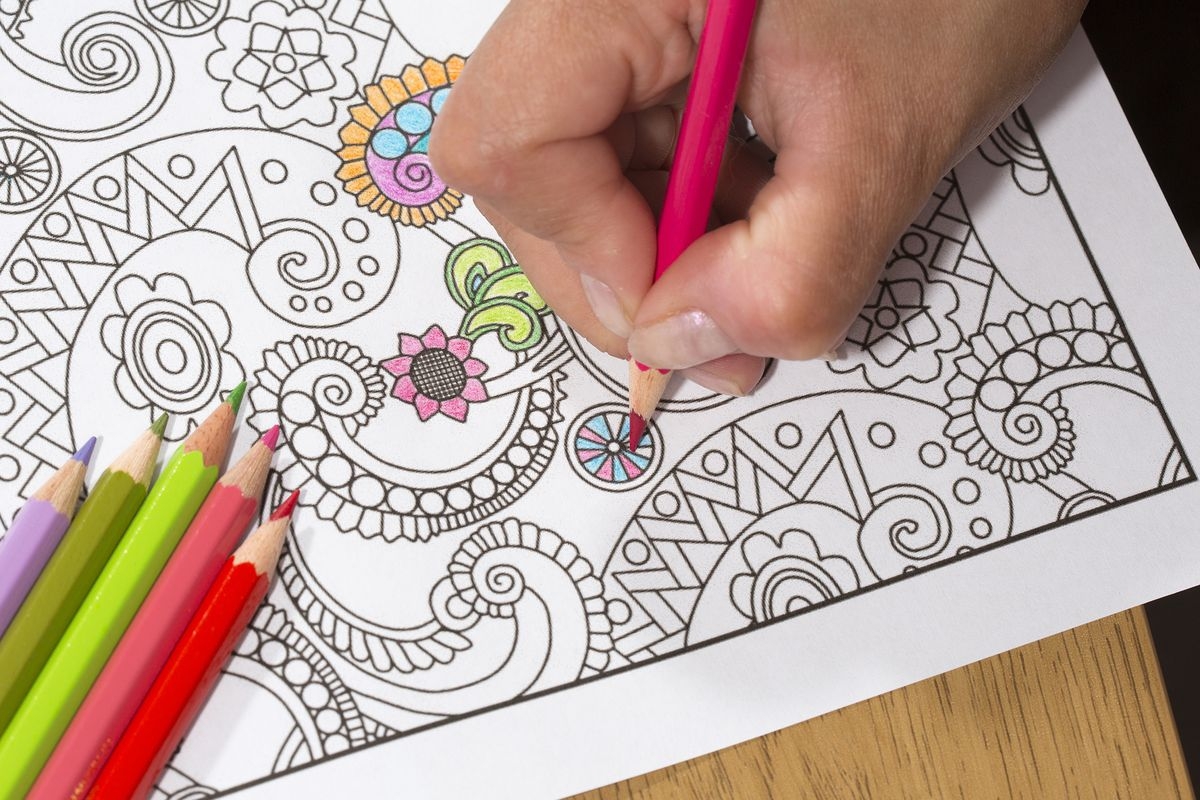Handwriting Day (January 23): Meaning, Celebration, History, Meaning and Facts
 |
| National Handwriting Day. Photo: KnowInsiders.com |
| Table of Contents |
Even though technology facilitates communication globally and expedites writing, there are benefits to writing things down by hand. Writing with a pen and paper is an incredibly tactile and patient activity, whether it be for a journal, notes, or even a letter to someone. If it accomplishes anything, it compels the mind and body to resynchronize and slow down.
"National Handwriting Day is observed to raise public awareness of the value of handwriting. We all have the opportunity to reexamine the beauty and potency of handwriting on National Handwriting Day."
When and What is National Handwriting Day?
Every year on January 23rd, there is a celebration known as National Handwriting Day.
The fact that the day falls on John Hancock's birthday is not by accident. The first person to sign the Declaration of Independence was John Hancock. His signature is renowned for being large and bold.
If someone has ever asked for your "John Hancock," they are referring to the well-known signature of the person and they are requesting your own signature.
History of National Handwriting Day
The ability to write, which is what separates history from prehistory, is a critical ability that advances human civilization and enables widespread trade and communication. Not only does writing allow us to express our emotions and ideas, but it also provides a means of recording transactions, counting objects, and transmitting information to future users—all of which were vital for the early societies.
Although the exact beginnings of writing are unknown, we do know that it emerged independently around 3400 B.C. in a number of ancient regions, including Mesoamerica, China, India, and Mesopotamia. The earliest known writings are pictorial signs from modern-day Iraq that were eventually superseded by a sophisticated cuneiform character system derived from the sounds of the Sumerian language.
Writing systems are not all created equal. Some use grammatical structures to create complete sentences and depth of meaning, while others rely on pictorial symbolism or character combinations to create new meanings. Consonants, vowels, and syllable sounds are represented by symbols in alphabet-based writing systems, whereas symbols in semanto-phonetic writing systems represent both sounds and meanings.
 |
| Photo: History |
There are numerous uses for handwriting in literature, art, correspondence, record-keeping, and utility. The decorative lettering technique known as calligraphy raises writing to the level of exquisite art. Islamic mosque inscriptions, Western European illuminated manuscripts, ancient Chinese bronze ware, and Mayan hieroglyphs are a few examples of traditional calligraphy.
Despite the fact that we typically record everything on electronic devices in today's digital world, research indicates that handwriting has advantages over typing. Writing by hand can help with memory, focus, and stress reduction. Not to add, handwritten notes and letters are more respected than those that are typed or emailed. Try writing a letter, a note in your diary, or a list of things to do by hand and see how it changes!
Why is Handwriting Important?Writing with a pen or pencil on paper has been shown to have numerous benefits, even though using technology can make some tasks simpler. Writing down information increases your chances of remembering it more accurately than typing it down. In terms of creativity, it helps you stay away from the distractions of the digital world and more concentrated on the task at hand. Students who handwrite their notes do better cognitively than those who type them. The accompanying statistics, which can be viewed on BIC.com, are startling: 25% of American students may not be proficient in handwriting. Seventy-five percent of American students in grades four through twelve write below grade level, and thirty-three percent of American college students are not ready to write at a college level when they start school. Most importantly, Hanover Research discovered that even 15 minutes a day of handwriting can improve comprehension, motor skills, writing ability, and cognitive development. |
Read More: February US Calendar with Holidays and Celebrations
What Are the Benefits of Handwriting Versus Typing?
Writing has many deep-rooted benefits, like:
* Improves fine motor skills: Handwriting requires a complex cognitive process that includes neuro-sensory experiences and fine motor skills. Feeling the writing surface, holding the writing instrument, and directing precise movement with thought all give your brain a good workout! Typing, on the other hand, is a simple movement that relies on memory. Executing key strokes is simply a repetitive movement.
* Aids cognitive development: Handwriting practice has been shown in studies to improve children's literacy and cognitive development levels. This is most likely because as children learn to quickly translate mental images of letters into physical form, they begin to understand how letters form sentences and convey meaning.
* Improves reading comprehension: Strong writing skills lead to better reading comprehension.
* Retains knowledge: Taking handwritten notes helps you retain information better than typing.
* Increases creativity: Writing and drawing by hand forces us to slow down, think about the big picture, and generate creative ideas.
* Improves spelling: Writing words by hand rather than using a digital device's spell check aids learning and retention.
* Combats dyslexia: Studies show that learning cursive helps people with dyslexia form stronger associations with learning and memory.
* Calms nerves: According to Dr. Marc Seifer, a graphologist and handwriting expert, writing a soothing sentence such as "I will be more peaceful" at least 20 times per day can help a person relax.
What Are a Few Ways to Celebrate National Handwriting Day?
While we use our keyboards and smartphones every other day of the year, let's use National Handwriting Day to dust off the old pen or pencil and start writing.
1. Write a Letter
 |
| Photo: Two Sides |
There's nothing like receiving a handwritten letter or card in the mail, which is unfortunately becoming a lost art. But National Handwriting Day is an excellent opportunity to revive this tradition!
First, make a list of all of the friends and family you want to contact. Next, pick up some simple postcards or custom stationery and consider the message you want to convey. Perhaps you'd like to include some fun past memories, a handwritten poem, or an update on how your life has been. Whatever you write, the recipient will undoubtedly appreciate your efforts, and you will also be practicing your penmanship!
2. Draw a Doodle
Doodling is a great way to express yourself creatively and practice your writing skills while on the phone, in the waiting room, or simply lounging on the couch. Expand your doodles to create a larger sketch. Who knows, you might create your next work of art! Even if you don't consider yourself an artist or creative person, it never hurts to unleash your inner creativity with the help of pen and paper.
3. Color in a Coloring Book
 |
| Photo: Vox |
Your handwriting is more than just a means to an end for writing assignments; it can reveal a lot about your personality and preferences. Graphology is the study of handwriting that examines a writer's character, personality, and abilities, and it has existed for a long time. In fact, how you write can reveal over 5,000 different personality traits and can even be used to detect certain diseases, such as Parkinson's and Alzheimer's, early on. Here are some notable characteristics:
Writers who use large letters are more likely to be outgoing, personable, and outspoken, whereas those who use small letters may be more shy and withdrawn.
People who write rounded letters are creative and artistic, whereas those who write pointed letters are intelligent and curious.
Large loops in letters indicate open-mindedness and a desire for adventure, while narrow loops may indicate skepticism or restriction.
5. Analyze Handwriting Styles from the Past
While you're examining your own handwriting, look into some of the most famous scripts from the past! Handwriting, like speech patterns and dialects, evolves over time, and studying penmanship's history is fascinating. Discover how famous authors wrote some of their best work:
Lewis Carroll, the author of Alice in Wonderland, would handwrite his work and include beautiful doodles.
David Foster Wallace, a well-known postmodernist writer and poet, added stickers to his handwritten notes!
Jane Austen's handwriting was beautiful, but mostly illegible, at least to modern eyes.
Walt Whitman, the famous humanist, poet, and writer, had flawless calligraphy.
Anyone who has read John Steinbeck's The Grapes of Wrath will recognize his dedicated, disciplined, font-like handwriting.
As you can see, handwriting reveals a lot about a writer's work and style. Consider National Handwriting Day an opportunity to celebrate this art form.
6. Create a Vision Board
National Handwriting Day is also associated with the start of the year and making resolutions. A vision board is an excellent way to visualize your goals for the coming year, and making one from scratch is the ideal way to honor handwriting and art.
Vision boards are simple to create. You only need some old magazines, newspapers, other media, and art supplies. Find things that speak to you, such as a person in a suit for professional development or a large salad for healthy eating, and pin them to your board. Then, handwrite words of encouragement to finish the piece.
7. Practice Your Signature
 |
| Photo: The Postman's Knock |
Nobody asserted that only John Hancock was capable of having a stylish signature! Spend some time honing your handwriting on National Handwriting Day because your signature is your unique mark on everything from cards to checks. Experiment with various spellings, styles, and structures. Just the initials? whole name? bigger initial letter? There are countless options.
8. Keep a Dream Journal
Dream diaries allow you to record your dreams and are frequently used to identify emotional and mental patterns. They can serve as a starting point for a piece of writing or just be a fun pastime to see what creative ideas come to mind! Find a personalized journal that you adore and can keep by your bedside first. Next, develop the habit of writing down your dreams as soon as you wake up. Establishing the habit of dream journaling is essential, even if your entries are just snippets of memories or feelings. What you come up with might surprise you! Dream Studies' Ryan Hurb describes how he goes about dream journaling.
Fun facts about handwriting for National Handwriting Day
* There is enough graphite in the average pencil to write roughly 45,000 words (or to draw a 35 mile long line). Though untested, it is theoretically possible.
* Though some states have different policies, most do not include cursive writing in the K-12 school curriculum.
* Forensic Document Examination (the analysis of disputed handwritten documents) is widely accepted in courts of law.
* Studies show that you are more likely to retain information if you take notes by hand than you are if you take notes by typing.
* National Handwriting Day falls on January 23, which is also the same date as the birthday of John Hancock, the first signatory of The Declaration of Independence.
* The first handwriting was discovered as early as 3400-3100 BC, in Egyptian hieroglyphs and Sumerian archaic writing.
More national days in January* An average pencil contains enough graphite to write about 45,000 words, or 35 miles worth of lines. It's theoretically possible, but not tried. * While some states may have different regulations, most K–12 curricula do not include cursive writing. * The analysis of contested handwritten documents, known as forensic document examination, is commonly accepted in legal proceedings. * According to studies, taking notes by hand increases your chances of remembering the information better than typing them. * January 23rd, National Handwriting Day, is observed on the same day as John Hancock's birthday, who was the first signatory to the Declaration of Independence. The earliest known handwriting was found in Sumerian archaic writing and Egyptian hieroglyphs, dating back to 3400–3100 BC. |
 March US Calendar with Holidays and Celebrations March US Calendar with Holidays and Celebrations Check out the full list and the major of US calendar in March 2022 with National Day Holidays, Observances and Celebrations. |
 International Day of Families (May 15): History, Significance and Celebration International Day of Families (May 15): History, Significance and Celebration Founded by the United Nations (UN) in 1994, the International Day of Families is celebrated every May 15 to honor the importance of families. Families ... |
 International Day of Women and Girls in Science (February 11): Aiming, Significance, What can be done International Day of Women and Girls in Science (February 11): Aiming, Significance, What can be done The International Day of Women and Girls in Science celebrated on 11 February, is implemented by UNESCO and UN-Women(link is external), in collaboration with institutions ... |























